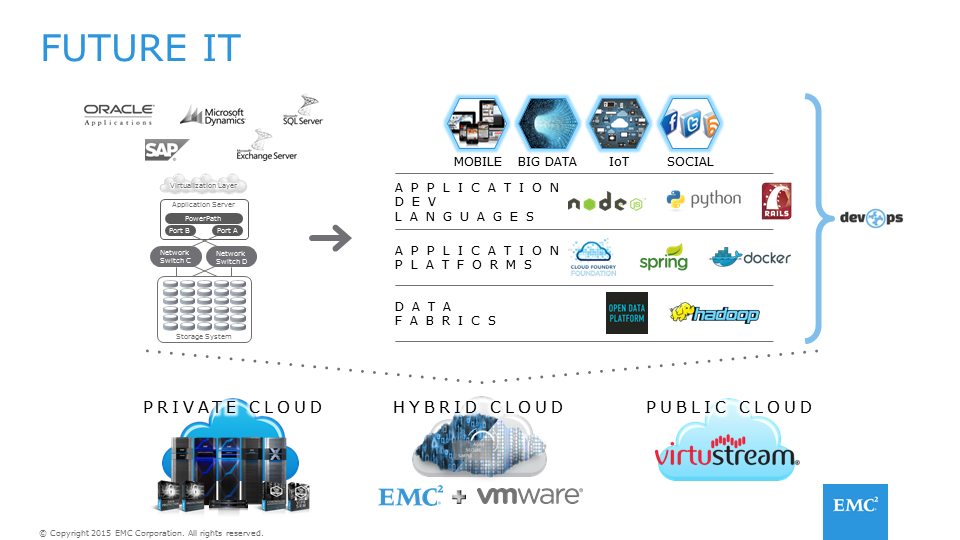For the last few years, IT has become good at deploying cloud infrastructures. We are successfully standing up clouds on premises, off premises and even creating hybrid models. Congratulations – we now have clouds.
The problem is once something exists, expectations shift. Our businesses and our customers assume that the infrastructure is in place, so the emphasis is now on using clouds to add value.
Our businesses are looking to IT to deliver business outcomes: predictively spot new business opportunities, deliver hyper personalized experiences to customers, and innovate at a pace that we’ve never done before. It is expected that IT service deployments will be completed in minutes, hours, or days as opposed to months or years. We are expected to have tools operating in real time while remaining trustworthy, secure, transparent, and in compliance.
 There is another key reason why IT has to shift from simply building clouds to actually exploiting them. Every one of our businesses is threatened by companies who are more adept at using modern IT technologies. Companies like Uber, Tesla, and Amazon are good examples of aggressively adopting a business model where new technologies are used to disrupt an industry.
There is another key reason why IT has to shift from simply building clouds to actually exploiting them. Every one of our businesses is threatened by companies who are more adept at using modern IT technologies. Companies like Uber, Tesla, and Amazon are good examples of aggressively adopting a business model where new technologies are used to disrupt an industry.
In every industry today, there is an equivalent to one of these companies. Some of you may be that equivalent.
The way to compete in an environment where these disruptors are present is to use cloud technology and the new overall IT stack to deliver more complex, intelligent services.
We’re starting to see this materialize in an entirely different IT stack often running on the same clouds as the existing mission-critical apps that support existing business processes. However, this new stack is built in the image of the new disruptive web scale companies.
This new IT stack based on data lakes uses new data fabrics that fundamentally allow aggregation of all structured and unstructured data from both internal and external sources.
On top of these data fabrics, we are seeing new application frameworks materialize. Cloud Foundry is a good example of a modern framework that is designed to efficiently compose a new set of apps with microservices supported by modern agile software development practices.

Programming languages are also changing. If you are going to develop a new app to serve your business and you’ve decided to run it in a microservices model with a containerized architecture, the odds are incredibly high that you will be developing it in Go or Node.JS or another new open source language.
And most importantly in this stack, the operating model is radically different. Traditional “test/dev” has been replaced by “dev/ops” where developers continuously create, instantiate, deploy, and even scale applications as a self-service operation.
To thrive in this new IT environment, we all need to be using clouds in two ways:
- To keep improving our IT environments as they exist today – eliminating time and cost, and
- As a place where we build a new parallel IT stack that enables us to create new software apps, delivering new products and services to disrupt our industry.
The exciting news for IT professionals is this transformation is happening. IT will be more important than ever. The bad news? We’re not going to get much sleep for the next 10 years.
This post is based on John’s CiscoLive! keynote, “The Evolution of the IT Career.” A recording of the presentation is available here (registration required).